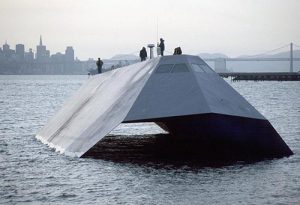You want real innovation ? R&D is where it starts. Mindset is how. When means if the ROI can follow.
Over and over in the “innovation” game the same issue arises – what is innovation? A Schumpeter definition of innovation from 1934 states innovation or development is/are new combinations of new or existing knowledge, resources, equipment, and other factors yet distinguished from invention. Invention is not for commercialization rather a “unique” success after many attempts where efforts succeed functionally or scientifically to solve X or create Y. Is “innovation” then just another pseudo-definition for new product development? Often yes when used incorrectly. That is because Schumpeter was expressing a socially accepted way of “innovation” in the 1920’s and 1930’s rather than later where he was more “direct” in 1942.

Why does all of this matter? Because when Schumpeter stated in 1942 or shortly there before, that “creative destruction” is the “process of industrial mutation that incessantly revolutionizes the economic structure from within, incessantly destroying the old one, incessantly creating a new one” or as Wikipedia put it, “the linked processes of the accumulation and annihilation of wealth under capitalism” the translation gets lost. The reality is that in the ‘innovation” game, simply, anything goes when you set out to destroy / design / innovate / create in relation to others in your market as when the dust settles, “innovating” occurs, eg. DRM ( digital rights management ) put a lot of record stores 100% right out of business. whoever created the math did not win, whoever licensed it, organized it, launched and enforced contracts for it won. They were the “innovators”
In today’s world it is Clay Christensen at Harvard Business School’s “disruptive innovation” being labeled “the most influential business idea of the early 21st century in The Economist in 2017 equating quite closely to Schumpeter’s “creative destruction” where, when “In order to introduce innovation activity in the company, the first operation was to change the mindsets [of employees]. Product innovation was not the priority [ rather ] a lack of skills and knowledge of innovation design [was]. As a consequence, a very progressive learning approach [must be ] been set up” as stated in “Encouraging innovation activity in the specific context of small and medium sized retailers” where large sample size research with multiple retailers in the 50-100 retail store size range shows how design innovation and disruptive design leadership actually produces ROI. But did these firms need to “disrupt” or creatively “destroy” ? In fact yes, and it all started with a change in mindset where design was the mechanism that made it possible.





































